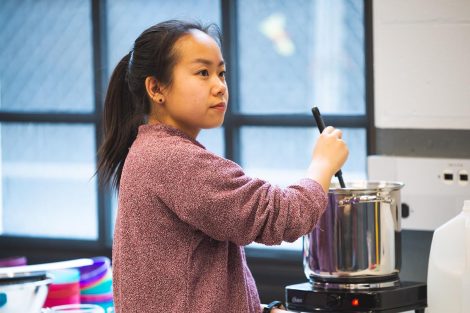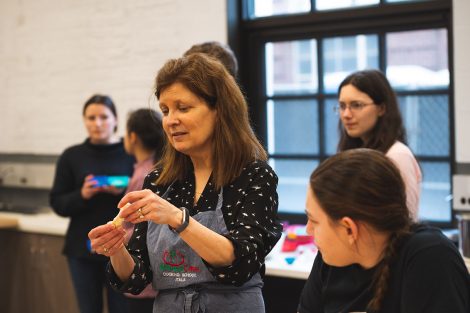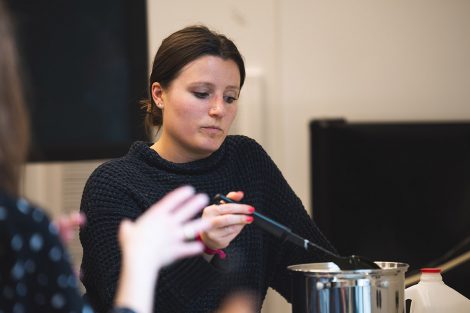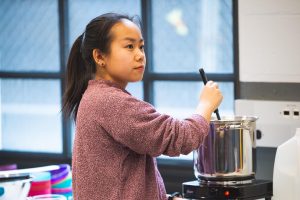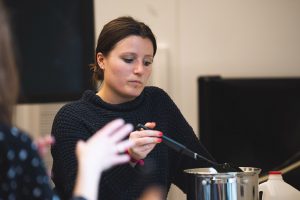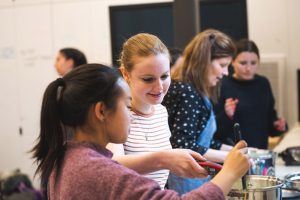Notice of Online Archive
This page is no longer being updated and remains online for informational and historical purposes only. The information is accurate as of the last page update.
For questions about page contents, contact the Communications Division.
Food engineering professor shares career insights while inviting students to get in on the action
By Bryan Hay
What would be the crowning gastronomical touch on a tempting spread of Italian cold cuts, olives, and marinated mushrooms?
Fresh, still-warm mozzarella, perhaps?
As part of Women in STEM Week, Polly Piergiovanni, professor of chemical and biomolecular engineering, cooked up an idea that had mouths and scientific interests watering among students, faculty, and other guests lured to the ground floor of Acopian Engineering Center by the promise of mild, milky mozzarella.
STEM-inspired cheese making was a perfect fit for Piergiovanni, whose research interests include food engineering. Overseeing the gradual heating of unpasteurized whole milk and carefully measured additions of citric acid, which makes mozzarella stretchy, and rennet, the enzyme that causes the milk to coagulate and form curds, she made all the connections among math and science and the culinary world.
“Everybody loves cheese,” declared Stephanie Wagner ’20 (chemical engineering), who helped stir a stainless steel pot of warm milk.
“It’s just chemistry,” said Piergiovanni, who spooned the creamy curds from the whey, gathered small clumps, and began stretching them into shiny, tender strands of mozzarella. She then instructed and encouraged two sessions of eager observers to do the same.
Trays of sliced tomatoes, fresh basil, crusty bread, balsamic vinegar, and extra-virgin olive oil awaited the final strands as enthusiastic cheesemakers built their own colorful caprese salads.
